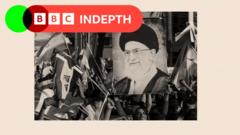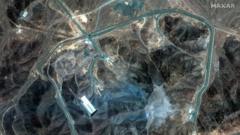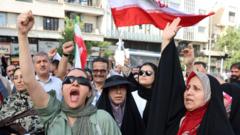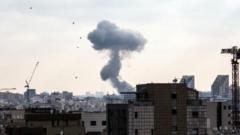In a coordinated military strike with Israel, the U.S. has targeted major Iranian nuclear facilities, raising concerns about the potential for a broader conflict. Iran vows to defend itself, and international leaders respond with mixed reactions.
U.S. and Israel Intensify Military Actions Against Iran's Nuclear Program

U.S. and Israel Intensify Military Actions Against Iran's Nuclear Program
The Pentagon reports severe damage to key Iranian nuclear sites amid escalating tensions and global reactions.
The U.S. has escalated its military involvement in the Middle East by participating in a bombing campaign against Iran, striking at the country’s key nuclear facilities. Officials from the Pentagon reported that significant damage was inflicted upon Iran's Isfahan, Natanz, and Fordo nuclear sites, intensifying the already fraught relations between the U.S. and Tehran. President Trump claimed these sites were "completely and totally obliterated," but Pentagon assessments indicated uncertainty regarding the full extent of Iran's remaining nuclear capabilities post-attack.
The Fordo facility, heavily fortified, was noted to have not been completely destroyed, suggesting that Iran might retain some operational capacity. Reports from Israeli officials indicated that Iran had preemptively removed critical equipment, including uranium, before the strikes took place.
In response, Iranian Foreign Minister voiced strong condemnation, asserting that the attacks undermined diplomatic efforts to reduce tensions. He emphasized Iran's right to self-defense. The sentiments among Iranian civilians varied from fear to anger, reflecting the country’s precarious situation. Meanwhile, leaders from around the world responded with concerns over the escalation, with some calling for restraint in further military engagements.
Looking ahead, many analysts predict that these attacks could lead to a more dangerous phase of conflict, as Iran might feel compelled to advance its nuclear program in response. The geopolitical implications of these developments remain to be seen, but they set a critical stage for future interactions in the region.






















